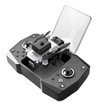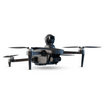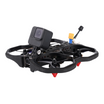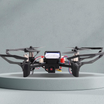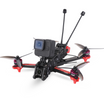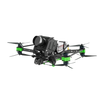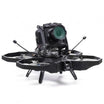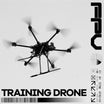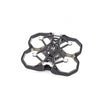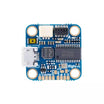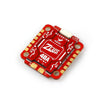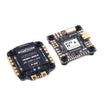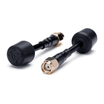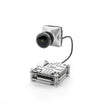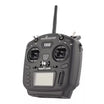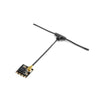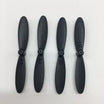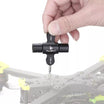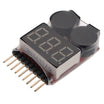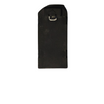Introduction
Drones, also known as unmanned aerial vehicles (UAVs), are revolutionizing both personal and commercial use with their ability to access hard-to-reach places and capture unique aerial footage and photos. Drone piloting is becoming an increasingly popular hobby and career path as drones become more advanced and affordable. This guide covers everything a beginning drone pilot needs to know, including types of drones, rules and regulations, safety and privacy concerns, training recommendations, and tips on buying your first drone.
What Are Drones and How Do They Work?
Drones are aircraft that fly without an on-board human pilot. They are controlled remotely by a pilot on the ground using a controller that communicates with the drone via radio waves. Most consumer drones have four rotors with propellers that allow them to take off vertically without the need for a runway. Many drones also come equipped with cameras, allowing the pilot to view real-time video footage captured from the air via a smartphone app connection.
Drones vary greatly in size, shape and capabilities. Toy drones may only fly for 5-10 minutes at a time while more professional models have flight times over 30 minutes. Drones built with high quality cameras and stabilization equipment can capture stunning aerial photography and seamlessly record smooth video. The most advanced drones even have intelligent flight modes such as “follow me”, orbit circular flight paths, and automatically avoid obstacles.
Popular Uses for Drones
Some of the most popular uses of drones today include:
- Aerial Photography/Videography - Capturing unique viewpoints and smooth video for real estate, events, travel and more
- Inspection/Surveillance - Safely inspect infrastructure, monitor crops, provide security
- Racing & Freestyle Drone Flying - Drone enthusiasts push limits flying drones fast through obstacle courses
- Mapping/Surveying - Create highly detailed 2D and 3D maps of geographical areas
Rules and Regulations for Flying Drones
In India, as the popularity of drones continues to soar, so do the regulations governing their safe and responsible use. The Directorate General of Civil Aviation (DGCA) has taken the lead in establishing guidelines tailored for both hobbyist and commercial drone pilots. It's imperative to grasp these rules thoroughly before taking flight. Here's an organized breakdown of some key regulations set forth by the DGCA and Digital Sky:
- Understanding DGCA and Digital Sky: The DGCA, India's regulatory body for civil aviation, oversees drone operations through Digital Sky, a digital platform facilitating drone registration, licensing, and flight approvals.
- Mandatory Requirements: Drone pilots must obtain a valid Unique Identification Number (UIN) or Unmanned Aircraft Operator Permit (UAOP) issued by the DGCA. Visual line-of-sight (VLOS) must be maintained with the drone at all times during flight.
- Flight Restrictions: Drones should only be flown during daylight hours and under favorable weather conditions to ensure optimal visibility. Vertical flight is limited to a maximum altitude of 400 feet above ground level.
Upon successful completion of training, applicants can apply for a Remote Pilot License (RPL) and a Unmanned Aircraft Operator Certificate (UAOC).
Importance of Certification: Holding a valid RPL and UAOC demonstrates competency and adherence to regulatory standards, instilling trust and credibility among stakeholders.
It also enables access to specialized drone operations and commercial opportunities.
Consequences of Non-Compliance: Failure to comply with drone regulations can result in severe penalties, including hefty fines and legal consequences.
By flying responsibly and in accordance with regulations, drone enthusiasts contribute to maintaining accessibility and safety in the airspace.
Understanding and adhering to DGCA and Digital Sky regulations not only ensures compliance but also fosters a culture of safety and responsibility within the drone community. By following these guidelines, enthusiasts can continue to enjoy the wonders of drone technology while safeguarding public interests and airspace integrity.
Drone Safety and Privacy Concerns
While drones provide many benefits, their use also raises valid safety and privacy issues. Loss of control, flyaways, and collisions remain leading causes of drone accidents. Beginners must properly maintain their drones, monitor flight conditions, and fly only within line of sight during training. More advanced autonomous flight should be performed cautiously and only after mastering manual piloting.
As camera-equipped drones become pervasive, personal privacy also becomes a concern. Responsible pilots should avoid residential areas and never deliberately record private property or attempt surveillance without permission. Numerous laws protect individuals against invasion of privacy by drones. It’s wise to only share recorded drone footage publicly after ensuring shots do not infringe on personal privacy.
How to Start Flying Drones as a Beginner
Ready to take up this exciting new hobby? Here are some recommendations to help beginners successfully get started in drone piloting:
- Choose an Entry-Level Drone
Rather than opting for a more expensive professional drone with complex features, beginners should select an affordable model specifically geared towards training new pilots. InsideFPV's BIR V2 is an excellent choice, featuring stabilized flight capability, built-in safety features, easy controls and replaceable parts to withstand crashes.
-Utilize Simulator Programs
Virtual drone simulators allow you to use a simple controller to pilot drones in realistic environments without any crash risk. Refining control muscle memory in simulation for 10-20 hours before your first real flight is highly recommended to prevent damaging your new drone.
-Understand Basic Flight Controls
Though modern drones practically fly themselves, understanding basics like takeoff/landing, hovering, turning, forward/backward & Side-to-side movements remains essential. Master maneuvering your drone from different orientations and in various wind conditions.
-Fly in Wide Open Spaces
Local parks, sports fields and empty parking lots make ideal training spaces free of trees, power lines and buildings. Train yourself on basic movements at low altitudes before attempting any risky acrobatics or flights higher than 100 feet. Eventually progress into more confined areas only after demonstrating complete control.
-Record Your Flights for Review
Most drones feature integrated cameras or support external GoPros perfect for recording. Review your flight footage later to critique decisions and spot areas needing improvement. Share fun clips with other enthusiastic drone pilots once you've honed your abilities.
-Join a Drone Community
The hobby drone community features meetup groups, online forums and dedicated subreddits connecting enthusiasts in most major cities. Joining a community exposes you to events, flying spots, troubleshooting advice and lets you showcase your coolest drone videos.
-Upgrade to a More Capable Drone
Once you’ve logged over 50 flights and mastered basic control across different environments, consider upgrading to a more powerful drone like the InsideFPV Elevate. Intermediate models feature longer flight times, faster speeds, obstacle avoidance and superior cameras to capture stunning aerial footage. The skills you honed with your starter drone will ensure a smooth transition to more advanced UAVs.
Drone Piloting Opens Up New Possibilities
As drones continue to advance, their capabilities have sparked the interest of enthusiasts globally either recreationally or professionally. However, improperly using drones risks safety hazards, privacy violations, and legal consequences. By selecting beginner-friendly drones, utilizing simulators, understanding regulations, prioritizing skill development, and joining communities, new pilots can safely unlock drones’ immense potential. InsideFPV’s Bir V2 drone and online resources specifically cater to building essential abilities for hobbyists before graduating to advanced equipment like the Elevate model.
Following prudent procedures as covered in this guide allows aspirants to avoid common pitfalls on their journey towards mastering drones. With maturity and expertise, they gain access to previously impossible perspectives, able to showcase stunning visuals from new heights. The personal fulfillment and professional opportunities arising from UAV mastery necessitate the patience and diligence of students before attempting to soar too close to the sun. Respect the technology by embracing training, safety, and regulations before operating autonomously. Adopt this mindset, and drone piloting promises thrills unmatched across modern tech hobbies, successfully balancing skill development with fun.

